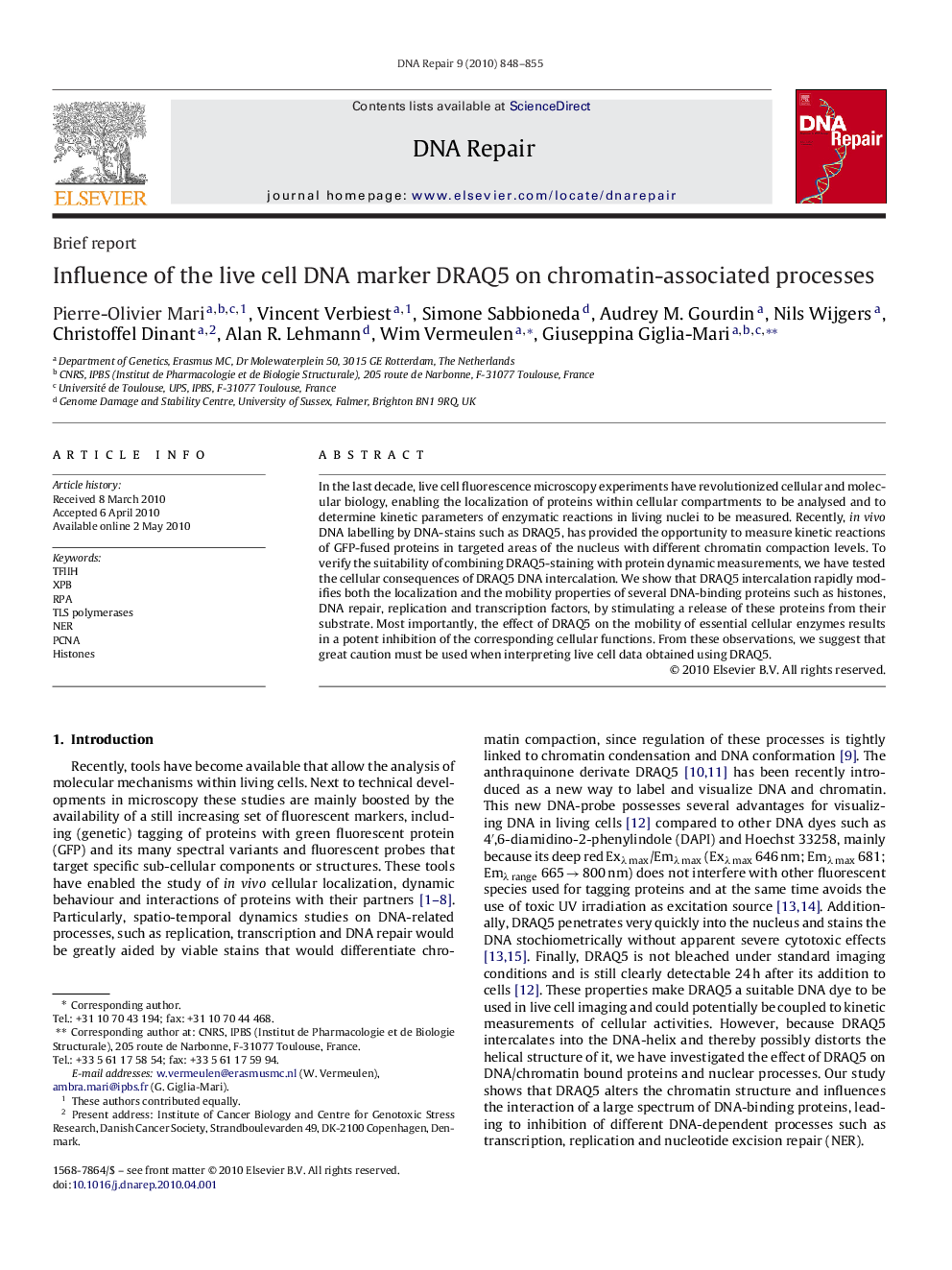| Article ID | Journal | Published Year | Pages | File Type |
|---|---|---|---|---|
| 1980672 | DNA Repair | 2010 | 8 Pages |
In the last decade, live cell fluorescence microscopy experiments have revolutionized cellular and molecular biology, enabling the localization of proteins within cellular compartments to be analysed and to determine kinetic parameters of enzymatic reactions in living nuclei to be measured. Recently, in vivo DNA labelling by DNA-stains such as DRAQ5, has provided the opportunity to measure kinetic reactions of GFP-fused proteins in targeted areas of the nucleus with different chromatin compaction levels. To verify the suitability of combining DRAQ5-staining with protein dynamic measurements, we have tested the cellular consequences of DRAQ5 DNA intercalation. We show that DRAQ5 intercalation rapidly modifies both the localization and the mobility properties of several DNA-binding proteins such as histones, DNA repair, replication and transcription factors, by stimulating a release of these proteins from their substrate. Most importantly, the effect of DRAQ5 on the mobility of essential cellular enzymes results in a potent inhibition of the corresponding cellular functions. From these observations, we suggest that great caution must be used when interpreting live cell data obtained using DRAQ5.
